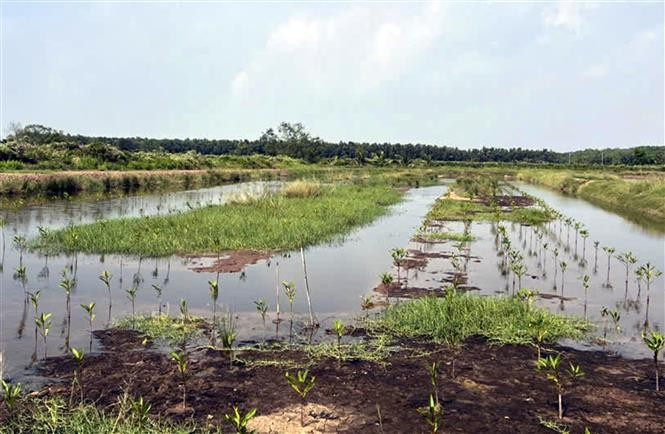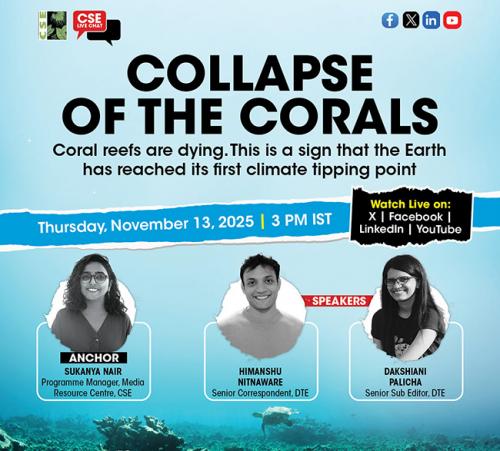Enhancing coastal resilience through mangrove restoration in aquaculture areas in Ca Mau Province – International Union for Conservation of Nature

Project Report: Scaling Up Nature-based Solutions Through Mangrove Restoration in Ca Mau Province
1.0 Project Overview and Strategic Alignment
The International Union for Conservation of Nature (IUCN), with funding from Hyundai Motor Company (HMC) and Good Neighbors International (GNI), initiated the project “Scaling up NbS through mangrove restoration in Ca Mau Province” in October 2023. This initiative is a component of HMC’s global “IONIQ Forest” corporate social responsibility program, which aims to combat climate change and advance sustainable development.
The project’s primary objectives are directly aligned with multiple Sustainable Development Goals (SDGs) by focusing on ecological restoration, livelihood enhancement, and climate adaptation.
- Primary Goal: To plant 160,000 mangrove trees to establish integrated mangrove-shrimp aquaculture systems.
- Secondary Goals: To promote forest-friendly aquaculture practices and demonstrate the application of Other Effective area-based Conservation Measures (OECM) in recognizing conservation outcomes.
2.0 Implementation and Progress
The project has achieved significant milestones in its initial phase, contributing to climate action and ecosystem restoration targets.
- Phase 1 Planting (June-July 2025): Over 80,000 mangrove trees were successfully planted across 18 hectares in Hoa Binh District.
- Phase 2 Planting (Scheduled 2026): The remaining 80,000 trees are scheduled for planting.
- Site Selection: Planting sites include integrated mangrove-shrimp ponds and coastal protection forests identified as being at high risk of erosion.
- Species Selection: The primary species planted is Rhizophora mucronata, chosen for its suitability to brackish conditions and its robust root system, which is effective for sediment trapping and shoreline stabilization.
3.0 Governance and Stakeholder Engagement
The project’s success is underpinned by a multi-stakeholder partnership model, exemplifying SDG 17 (Partnerships for the Goals).
- Government Oversight: The project is coordinated by the Management Board of Special-Use and Coastal Protection Forests, operating under the Ca Mau Department of Agriculture and Environment (DAE), ensuring alignment with provincial land use and development plans.
- Technical Leadership: IUCN provides technical expertise, applying best practices in mangrove reforestation and fostering robust community participation.
- Community Involvement: Local households are integral to the project, participating not only in planting but also in the long-term care, protection, and monitoring of the restored mangrove forests. This approach ensures local ownership and contributes to SDG 1 (No Poverty) and SDG 11 (Sustainable Cities and Communities).
4.0 Contribution to Sustainable Development Goals (SDGs)
The project delivers direct and measurable benefits across several environmental and socio-economic domains, advancing a range of SDGs.
4.1 Environmental Impact (SDG 13, SDG 14, SDG 15)
- SDG 13: Climate Action: The restored mangrove forests will increase carbon sequestration, directly mitigating climate change. They also serve as natural barriers, enhancing coastal resilience to erosion and climate-related risks.
- SDG 14: Life Below Water: The mangroves act as natural filters, improving water quality in aquaculture ponds. They also create complex habitats that support aquatic biodiversity and the health of coastal ecosystems.
- SDG 15: Life on Land: The project contributes to the restoration of terrestrial ecosystems through the large-scale planting of 160,000 trees, combating desertification and halting biodiversity loss.
4.2 Socio-Economic Impact (SDG 1, SDG 2, SDG 8)
- SDG 1: No Poverty & SDG 8: Decent Work and Economic Growth: The project directly improves the livelihoods of 23 households by stabilizing shrimp yields, reducing disease risks, lowering operational costs, and ultimately enhancing income stability and productivity.
- SDG 2: Zero Hunger: By promoting sustainable integrated mangrove-aquaculture, the project helps stabilize shrimp production, contributing to local food security and sustainable food production systems.
5.0 Project Significance and Future Outlook
The IONIQ Forest initiative serves as a critical pilot project demonstrating the efficacy of integrating mangrove restoration with aquaculture. This Nature-based Solution (NbS) and circular economy approach provides a scalable and replicable model for other coastal areas in the Mekong Delta that face similar climate and anthropogenic pressures. The project establishes a foundation for long-term contributions to the Sustainable Development Goals by building ecological and community resilience.
Analysis of Sustainable Development Goals in the Article
1. Which SDGs are addressed or connected to the issues highlighted in the article?
-
SDG 13: Climate Action
- The article explicitly states that the project’s goals are aligned with “national climate adaptation goals” and HMC’s initiative to “combat climate change.” The restoration of mangroves is presented as a method for “carbon sequestration” and to “mitigate climate change.”
-
SDG 14: Life Below Water
- The project is centered on restoring mangrove ecosystems, which are critical coastal habitats. It aims to “protect coastal protection forests,” improve conditions for “aquatic biodiversity,” and “reduce coastal erosion,” all of which contribute to the health of marine and coastal environments.
-
SDG 15: Life on Land
- Mangroves are a type of forest ecosystem. The project is a direct reforestation effort, aiming to plant “160,000 mangroves trees” and achieve “increased forest coverage.” This directly supports the goal of restoring degraded forests.
-
SDG 1: No Poverty
- The project has a clear socio-economic component, aiming to “improve the livelihoods of 23 households.” By stabilizing shrimp yields and enhancing income, it directly addresses economic vulnerability and poverty at the local level.
-
SDG 8: Decent Work and Economic Growth
- The project promotes “forest friendly aquaculture practices” and “integrated mangrove-aquaculture.” This represents a shift towards sustainable economic activities that “enhance productivity and income stability” while protecting the environment, aligning with sustainable economic growth.
-
SDG 17: Partnerships for the Goals
- The project is a collaboration between multiple stakeholders: IUCN (an international union), Hyundai Motor Company (private sector), Good Neighbors International (NGO), and local government bodies like the Department of Agriculture and Environment. This multi-stakeholder partnership is a core principle of SDG 17.
2. What specific targets under those SDGs can be identified based on the article’s content?
-
Target 13.1: Strengthen resilience and adaptive capacity to climate-related hazards and natural disasters in all countries.
- The project strengthens resilience by planting mangroves to serve as a buffer against “coastal erosion at high erosion risk,” a direct climate-related hazard.
-
Target 14.2: By 2020, sustainably manage and protect marine and coastal ecosystems to avoid significant adverse impacts, including by strengthening their resilience, and take action for their restoration in order to achieve healthy and productive oceans.
- The project is a direct “action for their restoration” by planting 160,000 mangrove trees in coastal areas to restore the ecosystem’s health and function.
-
Target 15.2: By 2020, promote the implementation of sustainable management of all types of forests, halt deforestation, restore degraded forests and substantially increase afforestation and reforestation globally.
- The project directly contributes to this target by reforesting “18 hectares” with 80,000 trees, with a goal of 160,000 total, to restore degraded mangrove forests.
-
Target 1.5: By 2030, build the resilience of the poor and those in vulnerable situations and reduce their exposure and vulnerability to climate-related extreme events and other economic, social and environmental shocks and disasters.
- The project supports “23 households” by stabilizing their main source of income (shrimp farming) and protecting their environment from coastal erosion, thereby reducing their vulnerability to environmental and economic shocks.
-
Target 8.4: Improve progressively, through 2030, global resource efficiency in consumption and production and endeavour to decouple economic growth from environmental degradation…
- The project promotes “integrated mangrove-shrimp farms,” a “nature-based and circular economic approach” that enhances productivity while restoring the environment, decoupling aquaculture growth from environmental degradation.
-
Target 17.17: Encourage and promote effective public, public-private and civil society partnerships, building on the experience and resourcing strategies of partnerships.
- The project is a clear example of a public-private-civil society partnership, involving IUCN, Hyundai Motor Company, Good Neighbors International, and the provincial government.
3. Are there any indicators mentioned or implied in the article that can be used to measure progress towards the identified targets?
Yes, the article mentions several quantitative and qualitative indicators:
- Quantitative Indicators:
- Total number of mangrove trees to be planted: 160,000
- Number of mangrove trees planted by July 2025: 80,000
- Area of land restored: 18 hectares
- Number of households directly supported: 23
- Qualitative and Implied Indicators:
- Increased forest coverage
- Increased carbon sequestration
- Reduction in coastal erosion
- Improvement in water quality
- Support for aquatic biodiversity
- Stabilization of shrimp yields
- Enhancement of productivity and income stability
- Establishment and operation of a multi-stakeholder partnership
4. Summary Table of SDGs, Targets, and Indicators
| SDGs | Targets | Indicators |
|---|---|---|
| SDG 1: No Poverty | 1.5: Build the resilience of the poor and reduce their vulnerability to climate-related events. | – Number of households with improved livelihoods (23) – Enhanced income stability |
| SDG 8: Decent Work and Economic Growth | 8.4: Decouple economic growth from environmental degradation. | – Implementation of integrated mangrove-shrimp farms – Stabilized shrimp yields and enhanced productivity |
| SDG 13: Climate Action | 13.1: Strengthen resilience and adaptive capacity to climate-related hazards. | – Reduced coastal erosion – Increased carbon sequestration |
| SDG 14: Life Below Water | 14.2: Sustainably manage, protect, and restore marine and coastal ecosystems. | – Area of restored mangrove forest (18 hectares) – Improved water quality – Increased aquatic biodiversity |
| SDG 15: Life on Land | 15.2: Promote sustainable management of forests, restore degraded forests, and increase reforestation. | – Number of mangrove trees planted (80,000 out of 160,000 total) – Increased forest coverage |
| SDG 17: Partnerships for the Goals | 17.17: Encourage and promote effective public, public-private and civil society partnerships. | – Establishment of a partnership between IUCN, Hyundai Motor Company, Good Neighbors International, and the Ca Mau government. |
Source: iucn.org

What is Your Reaction?
 Like
0
Like
0
 Dislike
0
Dislike
0
 Love
0
Love
0
 Funny
0
Funny
0
 Angry
0
Angry
0
 Sad
0
Sad
0
 Wow
0
Wow
0










































































